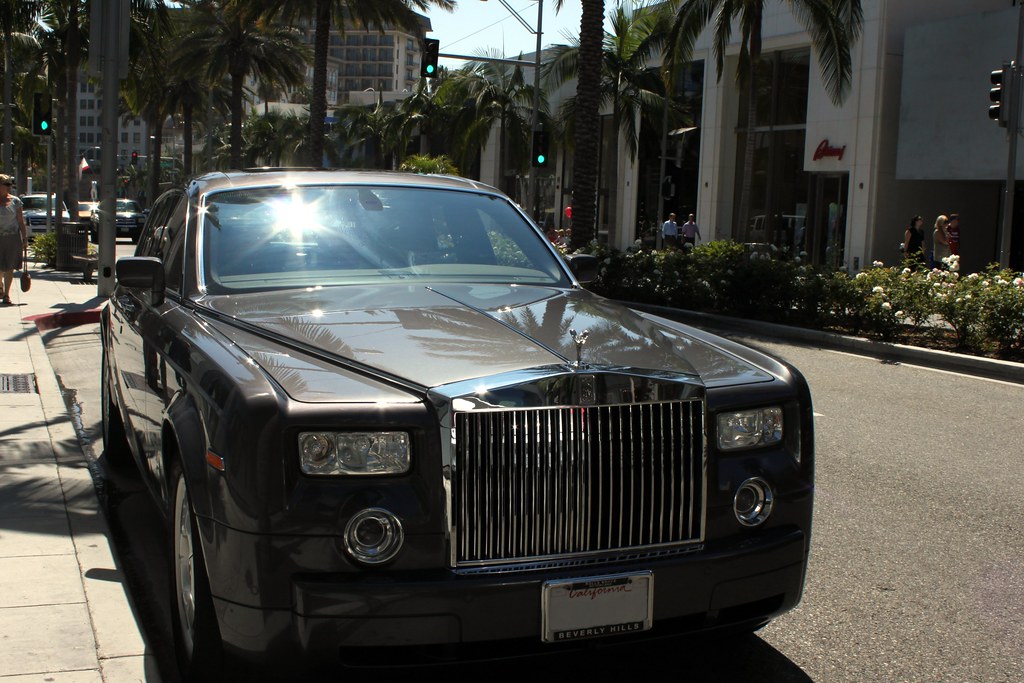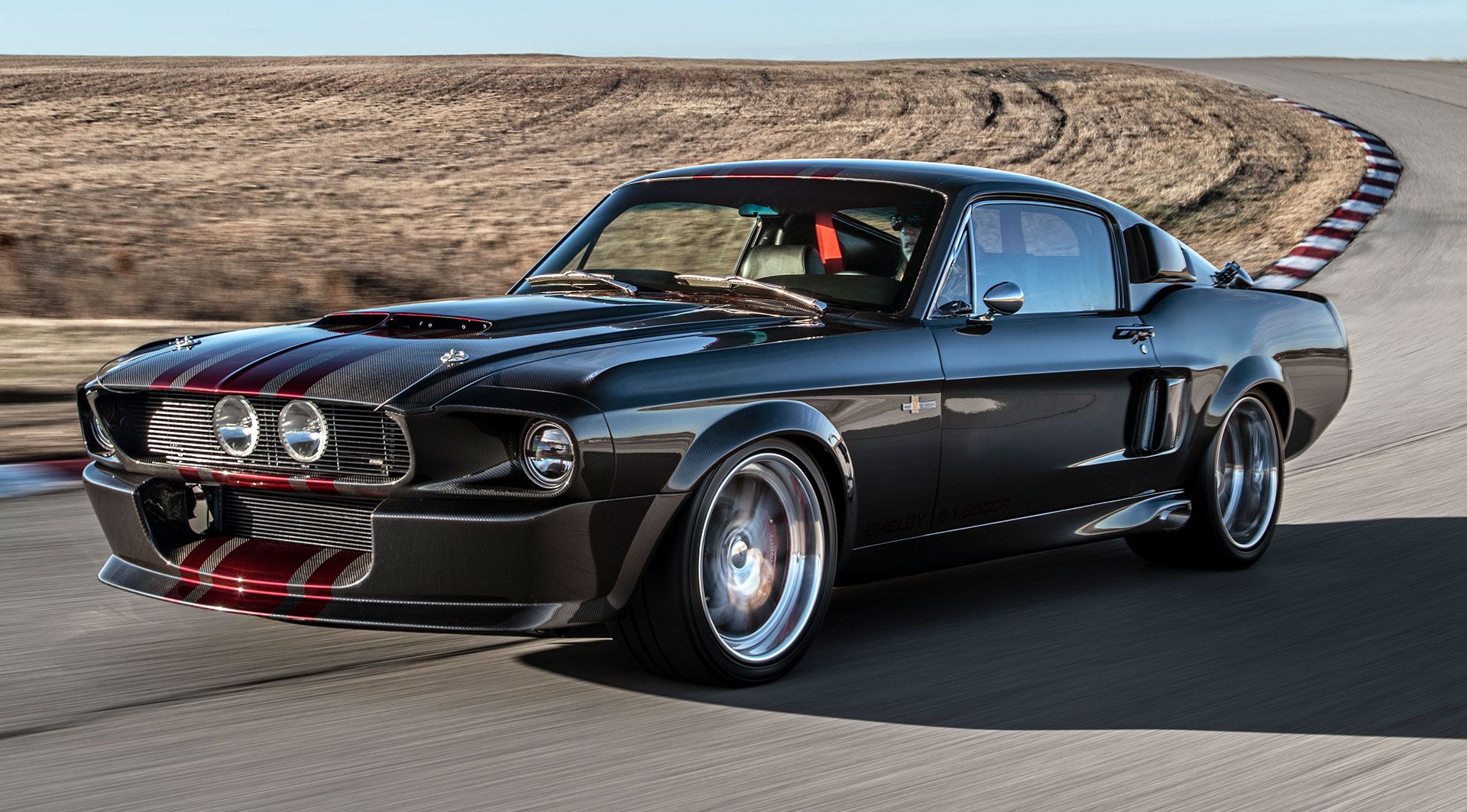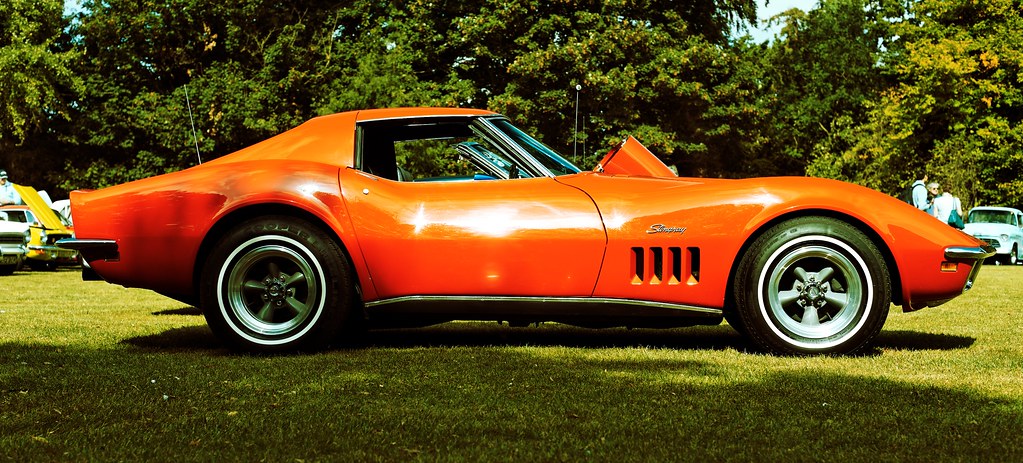
Many automotive enthusiasts dream of owning a classic car, envisioning themselves behind the wheel of a vintage machine, cruising with style and history. However, the thought of sky-high prices, relentless maintenance, and a garage full of obscure, unobtainable parts often brings that dream crashing back to reality. It’s a common misconception that classic car ownership must be an exclusive and financially draining endeavor, reserved only for those with unlimited budgets.
But what if we told you that the classic car market holds a trove of hidden gems, vehicles that not only offer an authentic, engaging driving experience but are also surprisingly affordable to acquire and maintain? This isn’t about compromising on character or settling for less; it’s about smart collecting, identifying vehicles that hit that sweet spot of budget-friendliness today while steadily appreciating in value for tomorrow. These are the tools, not just trophies, cars you can truly enjoy without fear of spiraling costs.
In this in-depth look, we’re peeling back the layers on twelve such iconic automobiles. We’ll explore why these machines, spanning various eras and origins, stand out as accessible entry points into classic car ownership. More importantly, we’ll delve into the factors that make them potential “future goldmines,” cars poised for significant value appreciation in the coming years. Get ready to rethink your classic car aspirations, as we unveil the first six picks that combine affordability with undeniable collector appeal.

1. **Mazda MX-5 Miata (NA)**The first-generation Mazda MX-5 Miata, known as the NA, remains one of the most affordable ways into classic car ownership, and its collectability continues to grow. Introduced in 1989, the Miata captured the essence of lightweight roadsters, offering modern reliability. Dealers and enthusiasts recognize that this model is reasonably priced, but values have been rising steadily as its status as a cultural icon strengthens.
A key reason the NA Miata is a future goldmine is its driving experience. Weighing just over 2,000 pounds, it delivers nimble handling and a direct connection between driver and machine. The 1.6-liter and later 1.8-liter engines may not deliver huge horsepower, but the car’s balance and agility make it an absolute joy on twisty roads. Collectors prize cars that embody pure driving fun, and the NA Miata fits that description perfectly.
Another reason for its growing value is the design. Pop-up headlights, compact proportions, and a simple interior make it instantly recognizable. These styling cues are timeless, and as pop-up headlights disappear from modern cars, models featuring them are becoming increasingly desirable. The NA Miata also benefits from strong aftermarket support, allowing owners to easily maintain, upgrade, and personalize their cars.
Affordability is another major factor. While other sports cars from the same era have climbed beyond reach, the NA Miata remains relatively inexpensive. However, values have begun to climb as enthusiasts realize they can own a piece of automotive history without spending a fortune. This combination of affordability, driving enjoyment, and cultural impact positions the NA Miata as one of the most promising affordable classics that will likely appreciate further in the coming years.
Car Model Information: 2018 Cadillac XT5 Base
Name: Mazda MX-5
Manufacturer: Mazda
Aka: unbulleted indent list
Production: 1989–present
Assembly: Hiroshima
Class: Roadster (car),sports car
Layout: unbulleted indent list
Platform: List of Mazda model codes#Model codes
Categories: 1990s cars, 2000s cars, 2010s cars, 2020s cars, All Wikipedia articles in need of updating
Summary: The Mazda MX-5 is a lightweight two-seat sports car manufactured and marketed by Mazda. In Japan, it is marketed as the Mazda Roadster or, previously, as the Eunos Roadster. In the United States it is sold as the Mazda Miata (), and it was formerly marketed under the same name in Canada. The name miata derives from Old High German for “reward”.
Produced at Mazda’s Hiroshima plant, the MX-5 debuted in 1989 at the Chicago Auto Show. It was created under the design credo Jinba ittai, meaning “unity of horse and rider”. Noted for its small, light, balanced and minimalist design, the MX-5 has often been described as a successor to the 1950s and 1960s Italian and British roadsters, with the Lotus Elan serving as a design benchmark.
Each generation is identified by a two-letter code, beginning with the first generation NA. The second generation NB launched in 1998, followed by the third generation NC in 2005, and the fourth generation ND in 2015.
More than one million MX-5s have been sold, making it the best-selling two-seat convertible sports car in history.
Get more information about: Mazda MX-5
Buying a high-performing used car >>>
Brand: Mazda Model: MX-5 Miata
Price: $21,937 Mileage: 23,247 mi.
Read more about: Track Day Champions on a Budget: 11 Bargain Sports Cars That Redefine Affordable Performance

2. **BMW E30 3 Series**The BMW E30 3 Series, produced from the early 1980s through the early 1990s, has become one of the most desirable affordable classics, with its values continuing to climb steadily. While certain versions, like the E30 M3, have already skyrocketed, standard models such as the 325i and 318i remain within reach. Dealers and collectors see them as smart investments that blend driving pleasure with strong heritage.
One of the standout features of the E30 is its engineering. With rear-wheel drive, precise steering, and well-balanced suspension, the E30 provides a rewarding driving experience that modern cars often struggle to replicate. Enthusiasts praise its analog feel, making it one of the best representations of BMW’s “ultimate driving machine” philosophy. This direct connection to the road is a powerful draw for classic car enthusiasts.
Styling also plays a huge role in its desirability. The boxy yet elegant design, classic BMW kidney grilles, and well-proportioned body give the E30 a timeless look. This aesthetic appeals to both longtime BMW fans and younger enthusiasts discovering the model. Its motorsport history, with the E30 platform widely used in racing, adds strong credibility among performance-minded collectors, even for non-M versions.
Affordability is shrinking, but clean examples can still be found at prices far lower than other European classics of the same era. Original, rust-free cars with manual transmissions are especially valuable, and their prices are expected to rise further. The E30’s blend of performance, styling, and cultural importance ensures its place as a future goldmine, making now one of the last chances to secure one at a reasonable price.
Car Model Information: 2018 Cadillac XT5 Base
Name: BMW 3 Series (E30)
Manufacturer: BMW
Production: 1982–1994
ModelYears: 1984–1991 (North America)
Class: Compact executive car
BodyStyle: Saloon (car),convertible (car),Station wagon
Layout: Front-engine, rear-wheel-drive layout,Front-engine, four-wheel-drive layout
Related: Alpina B3
Engine: ubl
Transmission: Manual transmission,5-speed manual,ZF 3HP22 transmission,ZF 4HP22 transmission
Wheelbase: 2570 mm
Abbr: on
Length: convert
Width: 1645 mm
Height: convert
Weight: convert
Predecessor: BMW 3 Series (E21)
Successor: BMW 3 Series (E36)
Assembly: Munich
Designer: Claus Luthe
ModelCode: E30
Categories: 1990s cars, All Wikipedia articles written in British English, All articles with dead external links, All articles with unsourced statements, Articles with dead external links from February 2022
Summary: The BMW E30 is the second generation of BMW 3 Series, which was produced from 1982 to 1994 and replaced the E21 3 Series. The model range included 2-door saloon (sometimes referred to as a coupé) and convertible body styles, as well as being the first 3 Series to be produced in 4-door saloon and wagon/estate body styles. It was powered by four-cylinder petrol, six-cylinder petrol and six-cylinder diesel engines, the latter a first for the 3 Series. The E30 325iX model was the first BMW to have all-wheel drive.
The first BMW M3 model was built on the E30 platform and was powered by the high-revving BMW S14 four-cylinder petrol engine. The BMW Z1 roadster was also based on the E30 platform. Following the launch of the E36 3 Series in 1990, the E30 began to be phased out.
Get more information about: BMW 3 Series (E30)
Buying a high-performing used car >>>
Brand: BMW Model: E30 3 Series
Price: $21,937 Mileage: 23,247 mi.
Read more about: Gone But Not Forgotten: 14 Legendary Naturally Aspirated Engines That Redefine Automotive Purity

3. **Toyota MR2 (AW11 and SW20)**The Toyota MR2, particularly the first two generations (AW11 and SW20), stands out as an affordable classic with strong potential for appreciation. Produced during the 1980s and 1990s, the MR2 gained attention for its unique mid-engine layout, which provided sports car dynamics at a fraction of the price of European exotics. Dealers and collectors know these models are still undervalued, but interest is rising quickly.
One of the biggest draws of the MR2 is its engineering. The mid-engine setup gave it exceptional handling balance, making it a thrilling car to drive. The AW11 delivered a lightweight, sharp-driving experience with its 1.6-liter engine. The second generation SW20 brought more power and refinement, offering turbocharged versions that could rival far more expensive sports cars of the era, solidifying its performance credentials.
Styling adds to its appeal. The MR2’s wedge-shaped design with pop-up headlights on the AW11 and the sleek curves of the SW20 capture the spirit of 1980s and 1990s sports car culture. Both generations have become increasingly rare in unmodified condition, and originality is one of the factors collectors value most. This scarcity of preserved examples contributes to their rising allure.
Affordability remains one of its biggest advantages. While prices for clean examples are climbing, the MR2 is still less expensive than many of its period rivals, making it an accessible entry into classic car ownership. Enthusiasts seeking a unique driving experience without spending heavily are quickly turning to the MR2, driving demand higher. This combination of uniqueness, styling, and accessible pricing positions the MR2 as a strong future goldmine.
Car Model Information: 1993 Toyota MR2 Turbo
Name: Toyota MR2
Caption: Second generation MR2
Manufacturer: Central Motors
Aka: Toyota MR (France and Belgium)
Production: 1984–2007
Assembly: Sagamihara, Kanagawa
Class: Sports car
Layout: Rear mid-engine, rear-wheel-drive layout
ModelYears: 1985–2007
Categories: 1990s cars, 2000s cars, All Wikipedia articles written in American English, All articles containing potentially dated statements, All articles needing additional references
Summary: The Toyota MR2 is a two-seater sports car which was manufactured and marketed by Toyota from 1984 until 2007 over three generations. It was the first Japanese rear-mid-engine, rear-wheel-drive production car and was sold around the world. The first generation (W10) was produced from 1984 to 1989, the second generation (W20) from 1989 to 1999, and the third generation (W30) from 1999 to 2007.
Conceived as a small, economical and sporty car, the MR2 features a straight-four engine, transversely mounted in front of the rear axle, four-wheel disc brakes, and fully independent coilover suspension with MacPherson struts on each wheel.
The name MR2 stands for either “mid-ship run-about 2-seater” or “mid-engine, rear-wheel-drive, 2-seater”. In French-speaking markets, the vehicle was renamed Toyota MR because the abbreviation “MR2” sounds like the profanity “merdeux” when spoken in French.
Get more information about: Toyota MR2
Buying a high-performing used car >>>
Brand: Toyota Model: MR2
Price: $21,499 Mileage: 145,631 mi.
Read more about: Future Fortunes on Four Wheels: 14 Classic Cars You Need to Buy Now Before Their Value Explodes
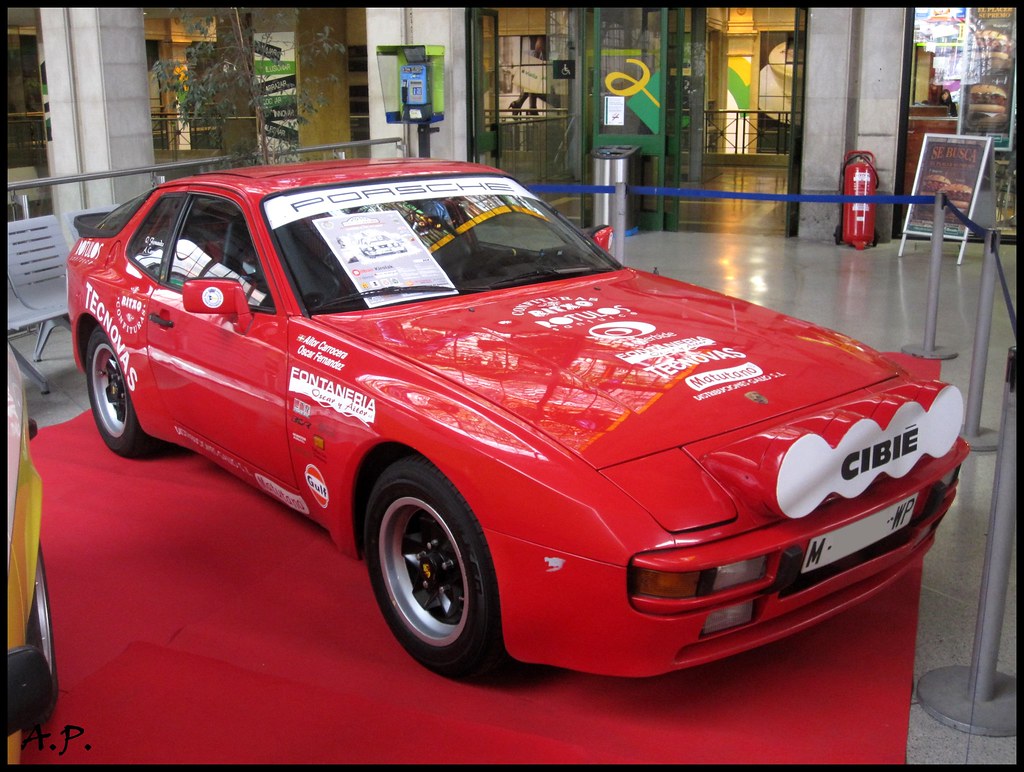
4. **Porsche 944**The Porsche 944 has long been considered one of the most undervalued cars to carry the Porsche badge, but that is beginning to change. Produced through the 1980s and early 1990s, the 944 was designed to be more accessible than the 911 while still offering genuine Porsche engineering. Dealers and collectors increasingly recognize its strong potential for appreciation, especially as affordable examples become harder to find.
Performance is one of its major strengths. With near-perfect weight distribution thanks to a transaxle layout, the 944 delivers exceptional handling. The naturally aspirated versions provide smooth power, while the Turbo models add serious performance that rivals more expensive sports cars from the same period. Enthusiasts appreciate the balanced driving experience, which makes it rewarding both on twisty roads and on track days.
Styling also contributes to its appeal. The 944’s clean, aerodynamic lines reflect 1980s design in a way that still feels modern today. Its wide stance and flared wheel arches give it a muscular presence without being over the top. Collectors value the fact that it represents an era when Porsche was experimenting beyond the 911, adding to its historical significance and unique identity within the brand.
Affordability has been one of the 944’s biggest advantages, though prices are climbing quickly. For years it was dismissed as the “budget Porsche,” but as enthusiasts grow nostalgic for analog sports cars, demand has risen sharply. Well-kept, original examples, especially the Turbo, are becoming highly sought after. With strong engineering, timeless design, and growing recognition, the Porsche 944 is moving from hidden gem to recognized classic, with its window of affordability closing.
Car Model Information: 1985 Porsche 944
Caption: 1986 944 Turbo (951) US-spec
Name: Porsche 944
Manufacturer: Porsche AG
Class: Sports car
Production: 1982–1991
Layout: Front-engine, rear-wheel-drive layout
Assembly: Neckarsulm,Stuttgart
Designer: Harm Lagaay
Predecessor: Porsche 924
Successor: Porsche 968
BodyStyle: coupé,convertible
Engine: Straight-four engine,Turbocharger,2.7 L M44/12 I4,3.0 L M44/41 I4
Wheelbase: 2400 mm
Abbr: on
Length: 1986–1988: {{convert,4318,mm,in,1,abbr=on
Width: 1735 mm
Height: 1275 mm
Transmission: Automatic transmission,Manual transmission
Weight: Pre-1988: {{convert,1180,kg,lb,0,abbr=on
Categories: 1990s cars, All articles needing additional references, All articles with unsourced statements, Articles needing additional references from September 2024, Articles with short description
Summary: The Porsche 944 is a sports car which was manufactured by the German company Porsche from 1982 until 1991. A front-engine, rear-wheel drive model based on the platform of the 924, the 944 was available in coupé or cabriolet body styles, with either naturally aspirated or turbocharged engines. With over 163,000 cars produced, the 944 was the most successful sports car in Porsche’s history until the introductions of the Boxster and 997 Carrera.
Extensive design revisions for the 1992 model year prompted Porsche to drop the 944 nameplate and rebrand the vehicle as the 968.
Get more information about: Porsche 944
Buying a high-performing used car >>>
Brand: Porsche Model: 944
Price: $12,900 Mileage: 158,477 mi.
Read more about: Beyond the Showroom Floor: Decoding the 13 Secrets of Iconic Engine Sounds and Their Physics
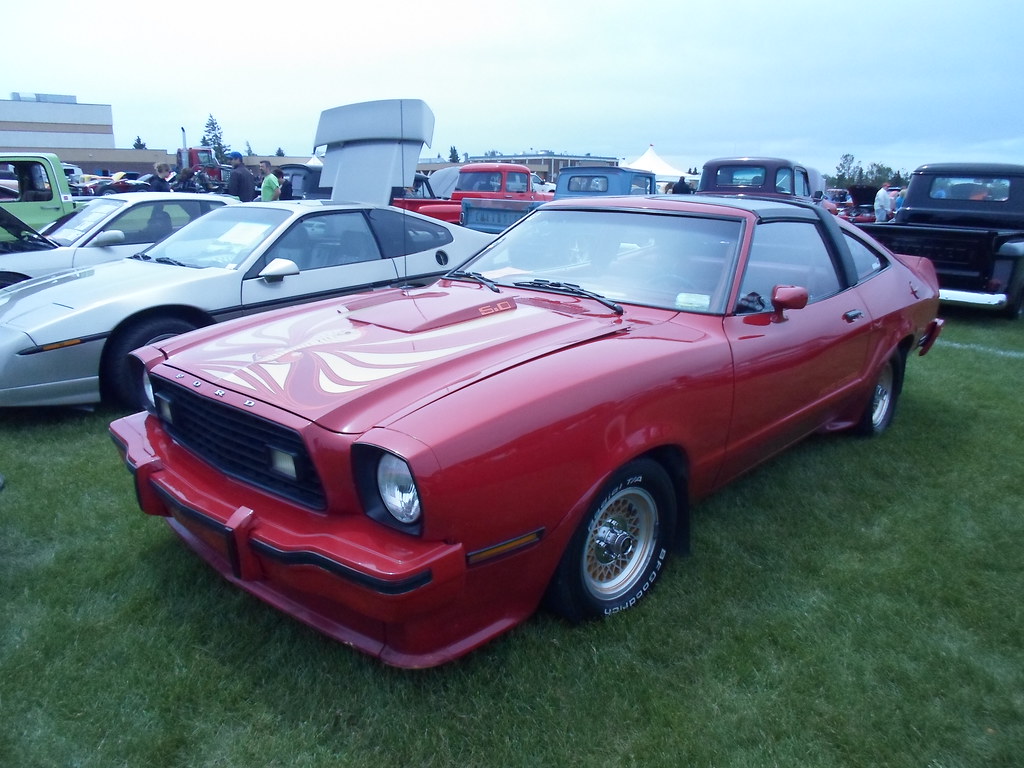
5. **Ford Mustang Fox Body**The Fox Body Ford Mustang, built from 1979 to 1993, has undergone a dramatic shift in reputation. Once seen as an inexpensive used car, it is now becoming a serious collector’s item. Dealers and enthusiasts have noticed that prices for clean examples are rising, making this generation a future goldmine for classic car buyers.
One of the main attractions is its performance heritage. The 5.0-liter V8 models, in particular, became icons of American car culture, offering accessible muscle at a time when many performance cars were losing their edge. The Fox Body gained popularity among tuners and racers, cementing its place in automotive history and making it a beloved platform for modification.
Styling also plays a role in its resurgence. Its angular lines and hatchback or notchback options give it a distinctly 1980s look that has become increasingly nostalgic. For collectors, cars that embody their era so clearly often hold strong long-term value. Its cultural relevance, as a fixture in street racing and 80s/90s pop culture, ensures sustained interest from younger enthusiasts.
Affordability remains a draw, though prices are rising. While rare versions like the Mustang SVO and Saleen already command a premium, even standard 5.0-liter cars are gaining value quickly. Clean, unmodified examples are especially desirable since many were modified heavily. The Fox Body Mustang’s combination of performance, style, and cultural significance ensures it will continue appreciating.
Car Model Information: 2008 Ford Mustang GT Premium
Name: Ford Mustang
Caption: 2018 Ford Mustang GT 5.0
Aka: Ford T5 (Germany)
Manufacturer: Ford Motor Company
Production: March 1964 – present
ModelYears: 1965–present
Class: Unbulleted list
BodyStyle: Unbulleted list
Layout: Front-engine, rear-wheel-drive layout
Categories: 1970s cars, 1980s cars, 1990s cars, 2+2 coupés, 2000s cars
Summary: The Ford Mustang is an American automobile manufactured and marketed by Ford since 1964, as Ford’s longest nameplate in continuous production. Currently in its seventh generation, it is the fifth-best selling Ford car nameplate. The namesake of the “pony car” automobile segment, the Mustang was developed as a highly styled line of sporty coupes and convertibles derived from existing model lines, initially distinguished by its pronounced “long hood, short deck” proportions.
Originally predicted to sell 100,000 vehicles yearly, the 1965 Mustang became the most successful vehicle launch since the 1927 Model A. Introduced on April 17, 1964 (16 days after the Plymouth Barracuda), over 400,000 units were sold in its first year; the one-millionth Mustang was sold within two years of its launch. In August 2018, Ford produced the 10-millionth Mustang; matching the first 1965 Mustang, the vehicle was a 2019 Wimbledon White convertible with a V8 engine.
The success of the Mustang launch led to multiple competitors from other American manufacturers, including the Chevrolet Camaro and Pontiac Firebird (1967), AMC Javelin (1968), and Dodge Challenger (1970). It also competed with the Plymouth Barracuda, which was launched around the same time. The Mustang also had an effect on designs of coupes worldwide, leading to the marketing of the Toyota Celica and Ford Capri in the United States (the latter, by Lincoln-Mercury). The Mercury Cougar was launched in 1967 as a unique-bodied higher-trim alternative to the Mustang; during the 1970s, it included more features and was marketed as a personal luxury car.
From 1965 until 2004, the Mustang shared chassis commonality with other Ford model lines, staying rear-wheel-drive throughout its production. From 1965 to 1973, the Mustang was derived from the 1960 Ford Falcon compact. From 1974 until 1978, the Mustang (denoted Mustang II) was a longer-wheelbase version of the Ford Pinto. From 1979 until 2004, the Mustang shared its Fox platform chassis with 14 other Ford vehicles (becoming the final one to use the Fox architecture). Since 2005, the Mustang has used the D2C platform, unique to the Mustang.
Through its production, multiple nameplates have been associated with the Ford Mustang series, including GT, Mach 1, Boss 302/429, Cobra (separate from Shelby Cobra), and Bullitt, along with “5.0” fender badging (denoting 4.9 L OHV or 5.0 L DOHC V8 engines).
Get more information about: Ford Mustang
Buying a high-performing used car >>>
Brand: Ford Model: Mustang
Price: $16,785 Mileage: 81,832 mi.
Read more about: Beyond the Showroom Floor: Decoding the 13 Secrets of Iconic Engine Sounds and Their Physics

6. **Nissan 300ZX (Z32)**The Nissan 300ZX, particularly the Z32 generation (1989-2000), has emerged as one of the most desirable Japanese classics. With its futuristic styling, strong performance, and connection to the golden era of Japanese sports cars, the 300ZX has been climbing in value steadily. Dealers know these cars are no longer cheap, but they remain relatively affordable compared to other 1990s icons, giving them strong investment potential.
One of the most appealing aspects of the Z32 is its performance. Offered with both naturally aspirated and twin-turbocharged V6 engines, the 300ZX delivered impressive power and handling for its era. The twin-turbo models could rival much more expensive European sports cars, making them a favorite among enthusiasts for their exceptional capabilities and value.
Styling plays a huge role in its desirability. The 300ZX featured sleek, low-slung lines and a wide stance that looked far ahead of its time in the early 1990s. Its design has aged gracefully, and many consider it one of the best-looking Japanese cars ever made. Technology also adds to its appeal, with advanced features like electronic climate control and four-wheel steering distinguishing it among its contemporaries.
Affordability, while shrinking, still sets the 300ZX apart. Prices for clean, unmodified twin-turbo models have been climbing, but non-turbo versions remain accessible. Collectors recognize that as supply decreases, even base models will rise significantly in value. With its combination of performance, design, and cultural importance, the Nissan 300ZX is one of the most promising Japanese classics to invest in today, promising strong returns.
Having unearthed the first six incredible classics that offer both driving pleasure and smart investment potential, our journey into affordable automotive treasures continues. Now, we delve deeper into six more budget-friendly vehicles, each possessing a unique blend of reliability, ease of maintenance, and historical significance. These are not just cars; they are opportunities to own a piece of motoring heritage, proving that accessibility and collectability can indeed go hand-in-hand. Get ready to discover the next wave of future goldmines, cars that promise both enjoyment on the road and a rewarding return in the garage.
Car Model Information: 1990 Nissan 300ZX GS
Name: Nissan 300ZX
Class: Grand Tourer
Manufacturer: Nissan
Production: 1983–2000
Assembly: ubl
Aka: Nissan Fairlady Z
Layout: Front-engine, rear-wheel-drive layout
Predecessor: Nissan Fairlady Z (S130)
Successor: Nissan 350Z
Categories: 1990s cars, 2+2 coupés, All articles needing additional references, All articles with unsourced statements, Articles needing additional references from May 2021
Summary: The Nissan 300ZX is a sports car that was produced across two different generations. As with all other versions of the Z, the 300ZX was sold within the Japanese domestic market under the name Fairlady Z.
It was sold in Japan from 1983 to 2000 and in the United States from 1984 to 1996, the 300ZX name followed the numerical convention initiated with the original Z car, the Nissan Fairlady Z (S30), which was marketed in the U.S. as the 240Z. The addition of the “X” to the car’s name was a carryover from its predecessor, the 280ZX, to signify the presence of more luxury and comfort oriented features. The first generation 300ZX known as the Z31 model was produced from 1983 through 1989 and was a sales success becoming the highest volume Z-car for Nissan.
To become even more competitive in the sports car market, the second generation 300ZX was driven up-market. It was redesigned to be faster and to feature more advanced technology, but came with a higher price than its predecessor, with consecutive price increases each model year of availability. As such, sales dwindled each year, a trend in the higher end sports car market at the time, and Nissan placed a hiatus on selling new Nissan Z-Cars to the US after the 1996 model year, though the car would continue to be sold in the Japan domestic market until 2001 in low production numbers.
Car and Driver placed the Z32 on its Ten Best list for seven consecutive years, each model year of its availability in the United States. Motor Trend awarded it as the 1990 Import Car of the Year. The Nissan 350Z, officially the Z33 generation Z-Car, succeeded the 300ZX in 2003.
Get more information about: Nissan 300ZX
Buying a high-performing used car >>>
Brand: Nissan Model: 300ZX
Price: $24,597 Mileage: 21,680 mi.
Read more about: Ignored No More: Unearthing the 16 Most Underrated Foreign Classic Cars of the 1990s

7. **Toyota Supra MK3**The third-generation Toyota Supra, produced from 1986 to 1993, has truly begun to gain the recognition it deserves as a future classic with strong potential for appreciation. While its successor, the MK4 Supra, often steals most of the attention, the MK3 offers a more accessible entry point into the celebrated Supra lineage. Dealers and collectors are increasingly turning their attention to this model, making it a popular choice for those looking for a smart investment.
Performance is undoubtedly one of the MK3 Supra’s strongest selling points. It famously introduced turbocharged power with its 7M-GTE inline-six engine, which offered serious performance for the late 1980s. This car delivered the rear-wheel-drive handling that driving enthusiasts craved, laying crucial groundwork for the legendary reputation of the later MK4. Many enthusiasts appreciate the MK3 as the foundational car that established Toyota’s performance dominance in the 1990s.
Its styling also adds significantly to its charm and collectability. With its angular lines, distinctive pop-up headlights, and bold, purposeful proportions, the MK3 Supra beautifully represents classic 1980s and early 1990s design. Its appearance makes it a standout at car shows and auctions, captivating attention with its authentic representation of that iconic era. Collectors particularly value its ability to embody the true spirit of its time.
Another factor boosting its collectability is its increasing rarity in original, good condition. Many MK3 Supras were unfortunately modified heavily or suffered from wear and neglect over the years. This means that well-preserved examples, especially those that remain unmolested, are becoming genuinely difficult to find. Dealers understand that originality always adds to long-term value, which in turn drives up demand for these prized, well-kept models. Compared to the skyrocketing prices of the MK4, the MK3 remains within reach but is steadily climbing, making it an excellent investment for those entering the Japanese classic market.
Car Model Information: 2024 Toyota Supra 3.0 Premium
Name: Toyota Supra
Caption: Toyota GR Supra (J29/DB)
Manufacturer: Toyota
Aka: unbulleted list
Production: unbulleted list
Class: Sports car
BodyStyle: fastback,coupé
Layout: Front-engine, rear-wheel-drive layout
Predecessor: Toyota Celica (A20)
Categories: 1980s cars, 1990s cars, 2000s cars, 2010s cars, 2020s cars
Summary: The Toyota Supra (Japanese: トヨタ・スープラ, Hepburn: Toyota Sūpura) is a sports car and grand tourer manufactured and developed by the Toyota Motor Corporation beginning in 1978. The name “supra” is a definition from the Latin prefix, meaning “above”, “to surpass” or “go beyond”.
The initial four generations of the Supra were produced from 1978 to 2002. The fifth generation has been produced since March 2019 and later went on sale in May 2019. The styling of the original Supra was derived from the Toyota Celica, but it was longer. Starting in mid-1986, the A70 Supra became a separate model from the Celica. In turn, Toyota also stopped using the prefix Celica and named the car Supra. Owing to the similarity and past of the Celica’s name, it is frequently mistaken for the Supra, and vice versa. The first, second and third generations of the Supra were assembled at the Tahara plant in Tahara, Aichi, while the fourth generation was assembled at the Motomachi plant in Toyota City. The 5th generation of the Supra is assembled alongside the G29 BMW Z4 in Graz, Austria by Magna Steyr.
The Supra traces much of its roots back to the 2000GT owing to an inline-6 layout. The first three generations were offered with a direct descendant to the Crown’s and 2000GT’s M engine. Interior aspects were also similar, as was the chassis code “A”. Along with this name, Toyota also included its own logo for the Supra. It was derived from the original Celica logo, being blue instead of orange. This logo was used until January 1986, when the A70 Supra was introduced. The new logo was similar in size, with orange writing on a red background, but without the dragon design. That logo, in turn, was on Supras until 1991 when Toyota switched to its current oval company logo. The dragon logo was a Celica logo regardless of what colour it was. It appeared on the first two generations of the Supra because they were officially Toyota Celicas. The dragon logo was used for the Celica line until it was also discontinued.
In 1998, Toyota ceased sales of the fourth-generation Supra in the United States. Production of the fourth-generation Supra for worldwide markets ended in 2002. In January 2019, the fifth-generation Supra, which was co-developed with the G29 BMW Z4, was introduced.
Get more information about: Toyota Supra
Buying a high-performing used car >>>
Brand: Toyota Model: Supra
Price: $59,995 Mileage: 1,454 mi.
Read more about: 13 Iconic 1980s Classics: Unearthing Automotive Treasures Whose Values Are Soaring for Collectors

8. **Mercedes-Benz 190E (W201)**The Mercedes-Benz 190E, known internally as the W201, is rapidly gaining serious traction among collectors and dealers as a rising star in the classic car market. Produced between 1982 and 1993, this model was initially conceived as Mercedes’ compact executive sedan. However, its exceptional engineering and storied motorsport pedigree have elevated it far beyond just an entry-level luxury car, solidifying its place in automotive history.
One of the 190E’s most compelling appeals lies in its legendary build quality. It was meticulously engineered during an era when Mercedes-Benz famously prioritized durability and an almost obsessive level of overengineering. This commitment resulted in solid materials, precise construction, and incredibly long-lasting mechanical components, giving it an enviable reputation for reliability that endures today. The sheer number of examples still gracefully navigating roads worldwide serves as powerful testimony to their remarkable resilience and enduring quality.
Performance is another pivotal factor in its growing allure. While standard models provided smooth, impeccably refined driving experiences, the higher-performance variants truly set the 190E apart. Editions like the 190E 2.3-16 and the iconic 190E 2.5-16 Evolution models brought cutting-edge motorsport technology directly to the road. These cars, developed with invaluable input from Cosworth, competed with great success in touring car racing, imbuing the model with significant historical weight and undeniable racing heritage. Even the regular versions benefit from exceptionally well-tuned suspension and balanced handling, making them genuinely enjoyable classics to drive.
Styling undeniably adds to its timeless appeal. With its clean, distinctive boxy lines, a purposeful and elegant stance, and subtle, sophisticated detailing, the 190E perfectly encapsulates 1980s German design at its absolute finest. Its timeless look has aged remarkably gracefully, continuing to appeal powerfully to both seasoned older collectors and enthusiastic younger admirers who seek authentic classics from that distinguished era. While values are climbing quickly, especially for the rare Cosworth-tuned models, the 190E still offers an excellent entry point into Mercedes-Benz ownership. Dealers recognize its unique blend of prestige and increasing collector recognition, positioning it as a truly strong future investment.
Read more about: The 12 Most Electrifying 1980s Cars Coveted by Collectors, and the Musicians Who Share the Passion
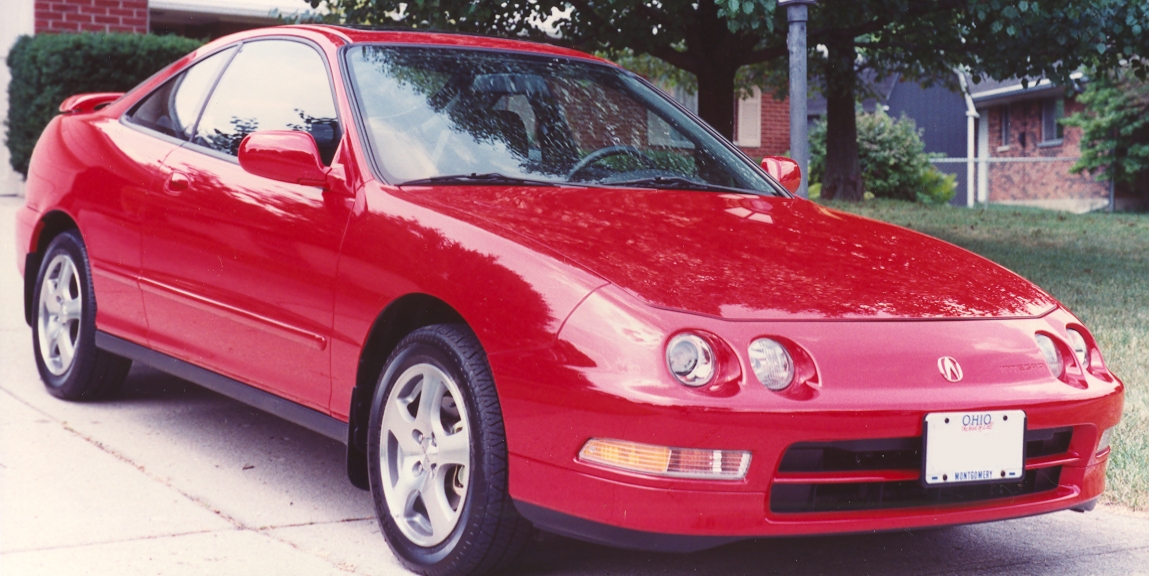
9. **Acura Integra GS-R**The Acura Integra GS-R from the 1990s stands as a pivotal moment in Honda’s illustrious performance history, now firmly established as a standout classic among Japanese sports compacts. Its value is steadily appreciating as demand for iconic 1990s performance cars continues to grow rapidly, catching the keen eye of both collectors and savvy dealers. This car represents an accessible yet thrilling piece of automotive heritage.
Performance is a significant factor in the GS-R’s enduring appeal. This model famously introduced the revolutionary VTEC system to the Integra lineup, endowing it with a unique and exhilarating blend of high-revving excitement and practical daily usability. Its 1.7-liter engine, a marvel of engineering for its size, produced impressive power outputs, while enthusiasts universally lauded the incredibly engaging manual transmission that allowed drivers to extract every ounce of performance from the car.
Styling also contributes substantially to its growing popularity and timeless charm. With its clean, understated lines, perfectly balanced proportions, and subtle yet distinctive sporty accents, the GS-R maintains a look that has aged remarkably well. Many younger enthusiasts, who vividly remember seeing these cars featured prominently in magazines and popular video games during their formative years, now eagerly aspire to own them, a desire which significantly fuels its rising demand in the collector market.
Another undeniable strength of the Integra GS-R is its sterling reputation for reliability. Unlike many temperamental performance cars of the 1990s, the Integra GS-R brilliantly combined genuine excitement with Honda’s legendary durability and unwavering dependability. This crucial characteristic makes it highly appealing not only to serious collectors but also to enthusiastic drivers who desire a classic vehicle they can genuinely enjoy and confidently drive on a regular basis. Its cultural relevance, reliability, and robust performance credentials all strongly suggest that its values will continue their impressive upward trajectory.
Car Model Information: 2024 Acura Integra A-SPEC
Name: Honda Integra
Caption: 2002 Honda Integra Special Edition (DC5) in Australia.
Aka: Honda Civic (eleventh generation)
Manufacturer: Honda
Production: proper name
ModelYears: 1986–2006,2023–present
Assembly: Suzuka, Mie
Class: Compact car
BodyStyle: liftback,coupé
Layout: Front-engine, front-wheel-drive layout,Front-engine, four-wheel-drive layout
Predecessor: Honda Quint
Successor: ubl
Categories: 1990s cars, 2000s cars, 2020s cars, All articles with unsourced statements, All articles with vague or ambiguous time
Summary: The Honda Integra (Japanese: ホンダ インテグラ, Hepburn: Honda Integura), sold in North America as the Acura Integra and later the Acura RSX, is an automobile produced by the Japanese company Honda from 1985 until 2006, and then since 2021. It succeeded the Quint as a more luxurious and sport-oriented derivative of the Civic. The Integra was one of the launch models for Acura in the US in 1986 alongside the Acura Legend. Throughout its production run, the Integra was highly regarded for its handling and performance. The 1995–2001 Integra Type R is widely regarded as one of the best front-wheel-drive cars of all time.
The Integra nameplate was revived in 2021 after a 16-year hiatus. The Honda Integra nameplate is used for a restyled Honda Civic sedan for the Chinese market, while the Acura Integra nameplate is used for a Civic-based liftback for North America, replacing the Acura ILX.
Get more information about: Honda Integra
Buying a high-performing used car >>>
Brand: Acura Model: Integra
Price: $29,000 Mileage: 16,785 mi.
Read more about: Unlock the Hidden Gems: 14 Underrated JDM Cars from the 2000s Every Enthusiast Should Collect
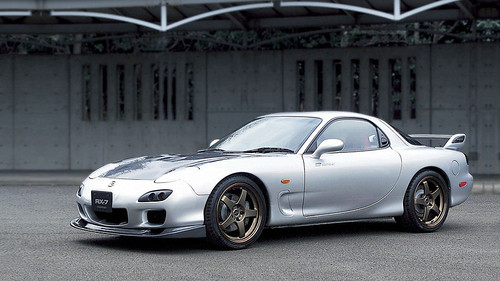
10. **Mazda RX-7 FD**The third-generation Mazda RX-7, universally known by its chassis code FD, is widely regarded as one of the most exquisitely designed and desirable Japanese sports cars ever conceived. Produced from 1992 to 2002 across various global markets, it masterfully combined breathtaking styling, advanced engineering, and an unparalleled reputation for delivering an unmatched, visceral driving experience. Dealers and astute collectors are increasingly viewing the RX-7 FD as a high-potential investment, consistently observing its prices climb steadily over the past decade.
Performance lies at the very core of the RX-7 FD’s immense appeal. Powering this automotive masterpiece was a unique twin-turbocharged rotary engine, which offered a distinct and exhilarating power delivery unlike anything else available on the market at the time. Its incredibly lightweight chassis and near-perfect weight distribution contributed to making it one of the absolute best-handling cars of the 1990s. Enthusiasts often compare its dynamic capabilities favorably to far more expensive European sports cars, a fact that unequivocally cements its legendary reputation as a true driver’s car.
The design also plays an undeniably major role in its lasting, iconic appeal. With its smooth, exquisitely flowing lines, distinctive pop-up headlights, and a low, aggressively purposeful stance, the RX-7 FD is widely considered to be one of the most beautiful cars of its entire era. Its visionary styling has aged remarkably well, retaining a timeless elegance that ensures it remains a prominent standout at both prestigious car shows and competitive auctions alike. Its aesthetic impact is simply undeniable.
Cultural relevance further significantly boosts its esteemed status. The RX-7 achieved stardom in various motorsport disciplines, gaining a cult following. It also featured prominently in popular video games and movies, creating a deep connection with a generation of enthusiasts. This widespread pop culture presence ensures that younger admirers, who grew up admiring these cars, now aspire to own them, directly fueling sustained interest and demand. As production numbers were relatively limited, and many have been modified, original, well-maintained examples are becoming exceedingly rare and thus more valuable.
Car Model Information: 1989 Mazda RX-7
Name: Mazda RX-7
Caption: 1994 Mazda RX-7 R2 (FD3S)
Manufacturer: Mazda
Aka: Mazda Savanna RX-7 (Japan, 1978–1991),Mazda ɛ̃fini RX-7 (Japan, 1991–1997)
Class: Sports car
Production: 1978–2002,811,634 produced
Assembly: Hiroshima
Platform: Mazda F platform
Layout: Front-engine, rear-wheel-drive layout#Front mid-engine, rear-wheel-drive layout
Predecessor: Mazda RX-3
Successor: Mazda RX-8
Categories: 1980s cars, 1990s cars, 2000s cars, 24 Hours of Le Mans race cars, All Wikipedia articles written in British English
Summary: The Mazda RX-7 is a sports car which was manufactured and marketed by Mazda from 1978 to 2002 across three generations. It has a front mid engine, rear-wheel-drive layout and uses a compact and lightweight Wankel rotary engine.
The first-generation RX-7, codenamed SA (early) and FB (late), is a two-seater coupé with a rear hatchback. It featured a 12A carbureted rotary engine as well as the option for a 13B rotary engine with electronic fuel injection in later years. The second-generation RX-7, carrying the internal model code FC, was offered as a two-seater coupé with a 2+2 option available in some markets, as well as in a convertible body style. This was powered by the 13B rotary engine, offered in naturally aspirated or turbocharged forms. The third-generation RX-7, model code FD, was offered as a two-seater coupé with a 2+2 version offered as an option for the Japanese market. It featured a sequentially turbocharged 13B REW engine.
More than 800,000 RX-7s were manufactured over its lifetime.
Get more information about: Mazda RX-7
Buying a high-performing used car >>>
Brand: Mazda Model: RX-7
Price: $88,997 Mileage: 48,130 mi.
Read more about: Unearthing Automotive Gold: 15 Underappreciated Sports Cars That Are Hidden Gems for Enthusiasts

11. **Toyota Celica (1970–1977)**The first-generation Toyota Celica, produced from 1970 to 1977, stands out as a charming and increasingly collectible Japanese classic. This model ingeniously took styling cues from popular American muscle cars of the era but skillfully packaged them into a lighter, more fuel-efficient, and characterful coupe. Enthusiasts and collectors alike are recognizing its distinct appeal and growing potential for appreciation, making it a truly smart acquisition.
Under the hood, the early Celica models featured either 1.9L or 2.0L engines. While these weren’t designed to be powerhouses, they were known for their exceptional ease of maintenance and surprisingly willing nature to rev. Crucially, most first-gen Celicas came equipped with manual gearboxes and a traditional rear-wheel-drive layout, providing a more engaging and purist-approved driving feel that harks back to simpler, more connected automotive eras.
The interiors of these early Celicas were straightforward yet thoughtfully designed, featuring comfortable bucket seats, a clean and functional dash, and analog everything. This minimalist approach means fewer complex electronics to worry about, contributing to its renowned reliability and ease of ownership. Light on intricate systems but full of undeniable character, the first-generation Celica boasts a passionate cult following, which ensures that parts and expert support are readily available, further enhancing its appeal as an affordable classic.
Car Model Information: 1985 Toyota Celica GT-S
Name: Toyota Celica
Caption: 1994 Toyota Celica GT-Four (ST205, UK)
Manufacturer: Toyota
Production: December 1970
ModelYears: 1971–2005
Assembly: Susono,Shizuoka Prefecture
Class: Sports car
BodyStyle: unbulleted list
Layout: unbulleted list
Categories: 1980s cars, 1990s cars, 2000s cars, Accuracy disputes from August 2020, All-wheel-drive vehicles
Summary: The Toyota Celica ( or ) (Japanese: トヨタ・セリカ, Hepburn: Toyota Serika) is an automobile produced by Toyota from 1970 until 2006. The Celica name derives from the Latin word coelica meaning heavenly or celestial. In Japan, the Celica was exclusive to Toyota Corolla Store dealer chain. Produced across seven generations, the Celica was powered by various four-cylinder engines, and body styles included convertibles, liftbacks, and notchback coupé.
In 1973, Toyota coined the term liftback to describe the Celica fastback hatchback, and the GT Liftback would be introduced for the 1976 model year in North America. Like the Ford Mustang, the Celica concept was to attach a coupe body to the chassis and mechanicals from a high volume sedan, in this case the Toyota Carina.
The first three generations of North American market Celicas were powered by variants of Toyota’s R series engine. In August 1985, the car’s drive layout was changed from rear-wheel drive to front-wheel drive, and all-wheel drive turbocharged models were manufactured from October 1986 to June 1999. Variable valve timing came in certain Japanese models starting from December 1997 and became standard in all models from the 2000 model year. In 1978, a restyled six-cylinder variant was introduced as the Celica Supra (Celica XX in Japan); it would be spun off in 1986 as a separate model, becoming simply the Supra. Lightly altered versions of the Celica were also sold through as the Corona Coupé through the Toyopet dealer network from 1985 to 1989, and as the Toyota Curren through the Vista network from 1994 to 1998.
Get more information about: Toyota Celica
Buying a high-performing used car >>>
Brand: Toyota Model: Celica
Price: $12,998 Mileage: 113,883 mi.
Read more about: 10 Collectible Classic Cars That Are Cheap & Easy To Maintain: Drive Your Dream Without Breaking the Bank

12. **Volkswagen Beetle (1970–1974)**For anyone seeking an entry point into cheap classic car ownership without sacrificing iconic status, the Volkswagen Beetle, particularly models from 1970 to 1974, is genuinely hard to beat. Its enduring appeal lies in its legendary simplicity, remarkable reliability, and a design that has become universally recognizable and beloved. This makes it an ideal choice for both seasoned collectors and those new to the classic car scene.
Mechanically, the Beetle is famed for its air-cooled 1.6L flat-four engine, an engineering marvel renowned for its incredible ease of maintenance. You truly don’t need much more than a basic socket set to perform most tasks, even to remove the engine from the car. Crucially, there’s no complex radiator or intricate electronics to contend with, minimizing potential headaches and keeping ownership costs commendably low. This straightforward design ensures that virtually any enthusiast can work on their own vehicle.
The interior of the Beetle is as minimal as its mechanicals—featuring sturdy vinyl seats, a utilitarian metal dash, and a handful of essential switches. This stripped-down approach is precisely what contributes to its enduring simplicity and charm. Furthermore, a massive aftermarket industry exists for the Beetle, meaning that almost any part you could possibly need is readily available and often costs less than a weekend dinner. If you desire a classic that runs dependably forever with minimal drama, the Volkswagen Beetle unfailingly delivers.
Read more about: Unearthing Automotive Gold: 15 Underappreciated Sports Cars That Are Hidden Gems for Enthusiasts
As we wrap up our deep dive into these twelve incredible classic cars, it’s clear that the dream of classic car ownership is far more accessible than many imagine. These vehicles aren’t just remnants of automotive history; they’re living, breathing machines that offer unique driving experiences, genuine character, and the very real potential for significant appreciation. Whether you’re drawn to the agile handling of a Miata, the timeless luxury of a Mercedes, or the sheer charm of a Beetle, there’s a budget-friendly classic out there waiting to be enjoyed. So, go ahead, take the plunge—your future goldmine, and a whole lot of driving joy, awaits.

